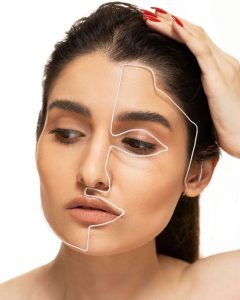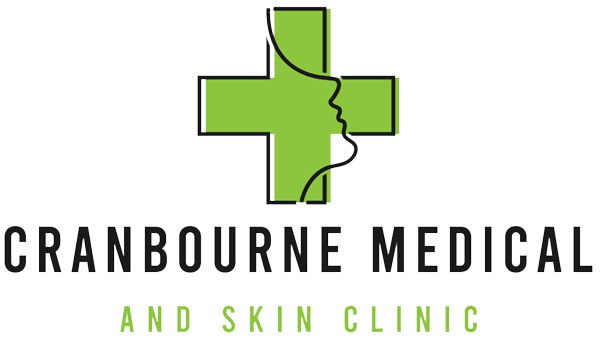
Are you looking for a non-surgical way to achieve a youthful, lifted appearance? PDO thread lift is a popular cosmetic procedure that has taken the beauty world by storm. This innovative treatment offers an effective solution for sagging skin without the need for invasive surgery.
The PDO thread lift is an advanced cosmetic procedure designed to rejuvenate your skin without extensive downtime. By using absorbable threads, this treatment provides a subtle lifting effect that improves facial contours and tightens sagging areas.
Many people are turning to PDO thread lifts for their non-invasive nature and impressive results. This guide will explore everything from the technology behind it to aftercare practices
What Are PDO Threads?
PDO threads, or polydioxanone threads, are absorbable sutures used in aesthetic medicine. They provide a lifting effect by stimulating collagen production and tightening the skin.
These threads come in various textures and thicknesses, allowing for customised treatments based on individual needs. PDO threads dissolve naturally over time, making them a safe option for non-surgical facial rejuvenation. They help achieve a youthful appearance without significant downtime.
What Makes PDO Threads Different?
PDO threads stand out due to their unique composition and design. Unlike traditional facelifts, PDO threads offer a minimally invasive alternative with less downtime. They can be tailored for various facial areas, making them versatile in achieving youthful contours without the need for extensive surgical procedures or recovery time.
Different Types of Threads
PDO threads come in various types, each designed for specific lifting and rejuvenation effects. There are monofilament threads, which provide subtle smoothing and skin texture improvement, making them ideal for fine lines.
Then there are barbed or cog threads that anchor to the tissue. These create a more dramatic lift by providing support to sagging areas, enhancing facial contours effectively. Each type has its unique benefits tailored to individual needs.
The PDO Thread Lift Process
The PDO thread lift process begins with a thorough consultation. During this time, your provider will assess your skin and discuss desired outcomes. This personalised approach makes sure the treatment aligns with your aesthetic goals.
Once you’re ready, tiny threads are inserted beneath the skin using a fine needle. The procedure is typically quick, often taking about 30 to 60 minutes depending on the areas treated. You’ll notice an immediate lifting effect right after.
During the PDO thread lift procedure, a local anaesthetic is applied to ensure comfort. The practitioner then inserts fine threads into targeted areas of the skin using a thin needle.
The threads are strategically placed to provide support and lift while stimulating collagen production over time. This creates an immediate lifting effect while encouraging natural tightening in the weeks following treatment.
Treatable Areas on the Face
PDO thread lifts can effectively target various areas of the face, enhancing overall appearance. Common treatable zones include sagging cheeks, jowls, and jawlines.
Additionally, they work wonders on brow lifts and nasolabial folds. The versatility of PDO threads allows for tailored treatments that address individual concerns, providing a natural lift without invasive surgery
Longevity of PDO Thread Lift
The longevity of a PDO thread lift typically lasts between 12 to 18 months, depending on individual factors. Skin type, age, and lifestyle all play crucial roles in how long the results can be maintained.
As the threads dissolve naturally over time, collagen production continues to improve skin texture and firmness. Maintaining healthy skincare routines can help extend these positive effects beyond the initial treatment period.
Debunking Common Myths
Many misconceptions surround PDO thread lifts, often creating unnecessary fear. One common myth is that the procedure is extremely painful; however, most patients report only mild discomfort during treatment.
Another misconception is that results are unnatural or stiff. In reality, when performed by skilled practitioners, PDO threads provide a subtle lift and enhance natural beauty without the overdone look associated with some fillers.
Many people believe PDO threads are only for older individuals, but they can benefit anyone seeking to enhance their facial contours. These threads stimulate collagen production, making them suitable for various age groups.
Another misconception is that the results look artificial or overdone. In reality, when performed by a skilled practitioner, PDO thread lifts provide natural-looking results that subtly rejuvenate your appearance without drastic changes.
How PDO Threads Compare to Dermal Fillers
PDO threads and dermal fillers serve different purposes in facial aesthetics. While fillers add volume and plumpness to targeted areas, PDO threads lift and tighten sagging skin by creating a supportive structure.
Fillers provide immediate results but may require more frequent touch-ups. In contrast, the effects of PDO thread lifts can last longer as they stimulate collagen production over time, offering gradual improvements alongside an initial lifting effect.
Recovery and Aftercare
After undergoing a PDO thread lift, proper aftercare is essential for optimal results. Patients are usually advised to avoid strenuous activities and prolonged sun exposure for at least two weeks. This helps minimise swelling and bruising.
It’s also important to follow any specific instructions provided by your practitioner. Keeping the treatment area clean and moisturised can support healing while enhancing the overall outcome of the procedure.
Avoid touching or rubbing the treated area for at least two weeks. This helps minimise the risk of infection and displacement.
Additionally, refrain from facial treatments like massages for about four weeks. Staying hydrated and following your provider’s recommendations can significantly enhance your results and comfort during recovery.
Understanding Recovery Period
The recovery period after a PDO thread lift varies for each individual. Most people experience minimal downtime, with effects visible right away. Swelling and bruising may occur but typically subside within a week.
During this time, it’s essential to follow your practitioner’s aftercare instructions carefully. This will promote healing and help you achieve the best possible results while minimising complications or discomfort in the days following your procedure.
Risks and Benefits
PDO thread lifts offer several benefits, including immediate lifting effects and minimal downtime. Many patients appreciate the natural results that improve over time as collagen production increases.
However, like any procedure, risks exist. These can include swelling, bruising, or infection at the insertion sites. It’s essential to discuss potential complications with your provider to make an informed decision about your treatment options.
When to Seek Medical Attention
If you experience severe pain, excessive swelling, or unusual bruising after a PDO thread lift, it’s essential to seek medical attention promptly. These symptoms could indicate complications that need professional evaluation.
Additionally, if you notice signs of infection—such as fever or discharge from the injection sites—don’t hesitate to contact your healthcare provider. Early intervention can help ensure a smoother recovery and optimal results from your treatment.
Comparing Surgical Facelift vs. PDO Thread Lifts
Surgical facelifts involve invasive procedures requiring anaesthesia and longer recovery times. They provide dramatic and long-lasting results but come with higher risks, including scarring and complications.
PDO thread lifts offer a less invasive alternative, using threads to lift the skin without extensive downtime. While results may not be as pronounced as surgery, many appreciate the subtle enhancement and quicker recovery associated with this procedure.
Choosing the Right Procedure for You
Choosing the right procedure depends on your individual goals and skin condition. Assess your needs and preferences carefully. A consultation with a qualified professional can provide valuable insights tailored to you.
Consider factors like downtime, desired results, and budget when making your decision. Each option has its unique benefits, so take the time to explore what aligns best with your expectations for facial rejuvenation.
